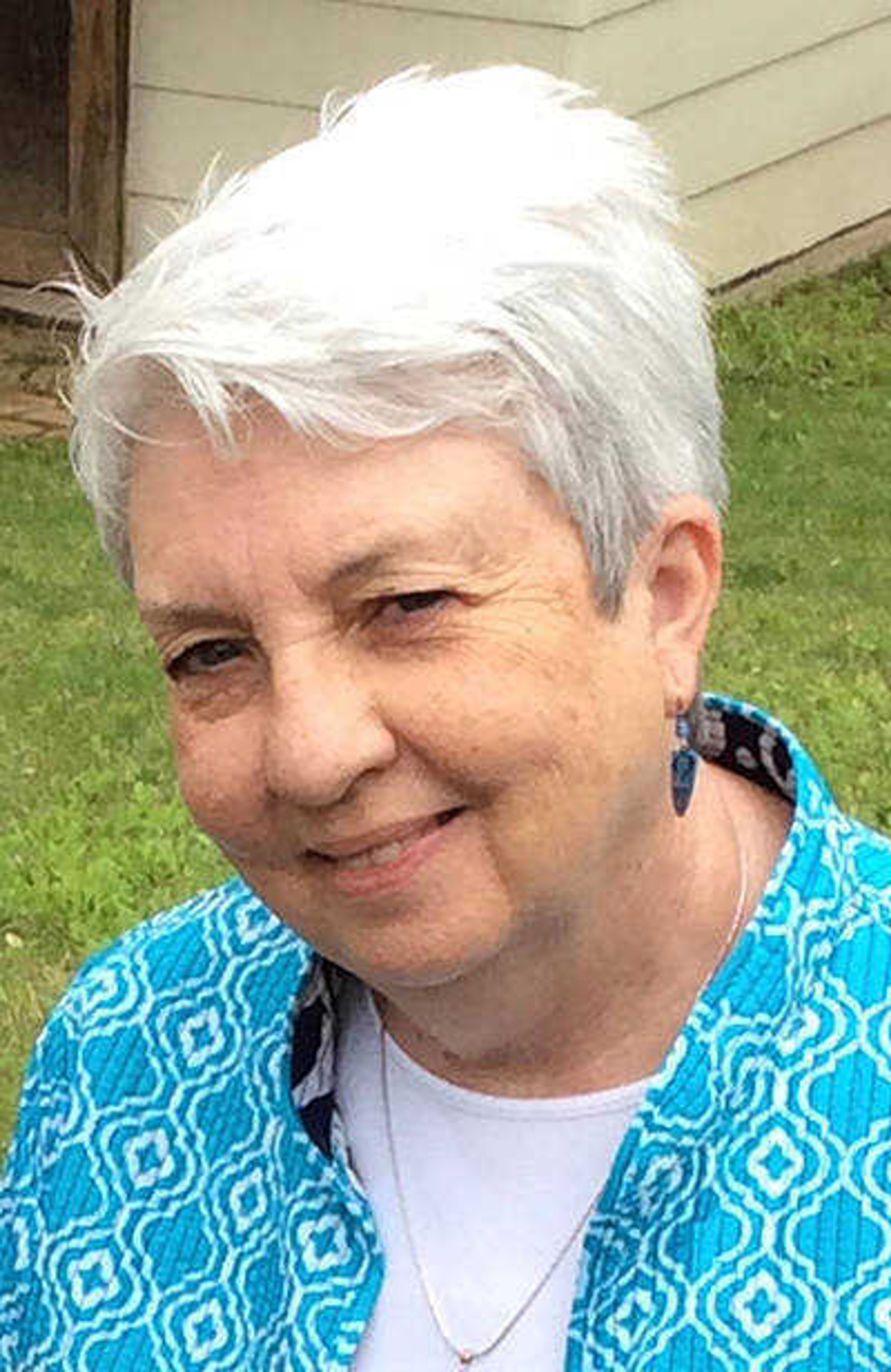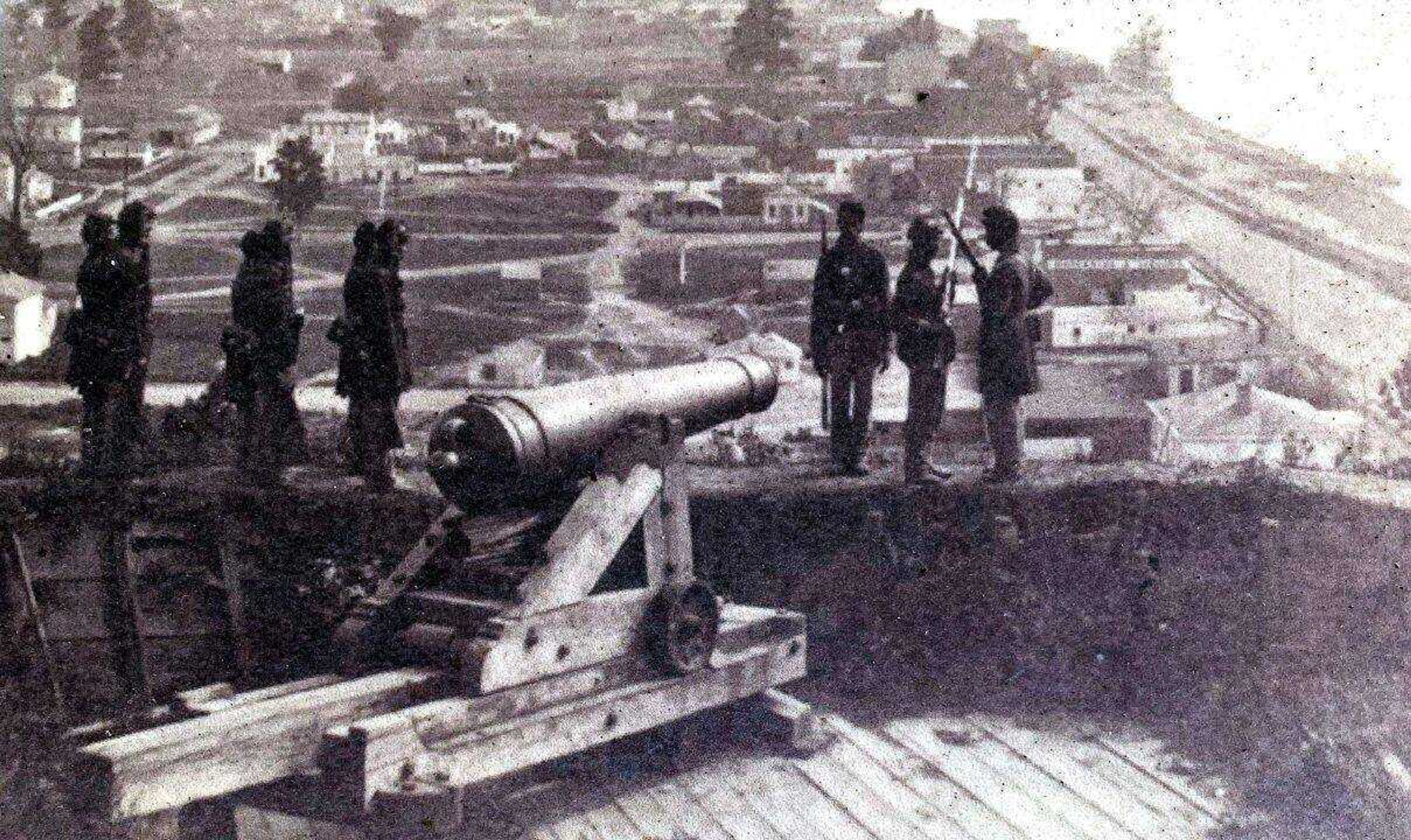Sgt. Jesse Cooper ties Cape Girardeau to the 4th USC HA
On a bluff high above the Mississippi River, remnants of a massive chain, a 9-foot anchor, artillery guns and cannons -- a former battle ground shares space with picnic tables, a playground and benches from which to watch modern tow boats maneuvering barges. A day trip to Columbus-Belmont State Park in Kentucky interpreted Civil War-era efforts of the Confederate and Union armies, vying to control the grand waterway.
On a bluff high above the Mississippi River, remnants of a massive chain, a 9-foot anchor, artillery guns and cannons -- a former battle ground shares space with picnic tables, a playground and benches from which to watch modern tow boats maneuvering barges. A day trip to Columbus-Belmont State Park in Kentucky interpreted Civil War-era efforts of the Confederate and Union armies, vying to control the grand waterway.
Storyboards highlight the role the 4th U.S. Colored Heavy Artillery Regiment’s (USC HA) presence and role in preserving the Union army’s control of the river from members' enlistment and muster in June 1863. Individual stories of Black soldiers starting from Post Cape Girardeau have been the focus of my research. The Cape Girardeau stories are expansive, so Black artillery regiments in Kentucky, while worthy, are just beyond my scope. Park information indicated most 4th USC HA soldiers escaped enslavement in Tennessee, Kentucky, Arkansas and Mississippi before enlisting. The freedom-seeking men, women, and children had gathered in contraband camps around Columbus, seeking protection of Union troops occupying the site after June 1861.
After the enjoyable day at the park, I checked my research notes and realized there was a Cape Girardeau connection with the 4th USC HA. Sgt. Jesse Cooper is one of 17 USCT veterans buried at Fairmount Cemetery regularly honored on Memorial Day with the placement of a U.S. flag alongside military headstones. Cooper’s pension file at the National Archives and Records Center in Washington, D.C., revealed details of his perseverance.
At the age of 12, Jesse was sold, separated from his enslaved kin, to be a house servant for John Ray near Paris, Tennessee. Three years later, he was purchased by a man named Booth to be a field hand. Several documents described Jesse as “nearly white, blue-eyed, light, curly hair, and small in stature.” Likely, Cooper’s strength and endurance did not match the task, and within two years he was, again, sold. Jesse’s last enslaver was James C. Cooper. For eight years, before the Civil War began, Jesse was the white Cooper family’s carriage driver.
When the enslaver’s son, Capt. James P. Cooper, went to war on the Confederate side, Jesse was forced to accompany him, as his camp servant. This arrangement only lasted a few months before Jesse returned to the plantation because of illness, likely malaria. As he recovered, he contemplated his freedom. In a few weeks, Jesse saw his chance and said he “went off” with several other freedom-seeking slaves “to find the Yankees.”
Jesse enlisted with the Union Army at Columbus, Kentucky, on June 4, 1863, designated second sergeant at muster-in. A few weeks later, the regiment chaplain married Jesse to Nancy, a woman he met in Columbus.
The 4th USC HA served garrison duty for nearly two years in Columbus. In December 1865, the regiment was ordered south. Nancy followed Jesse’s regiment for much of its service, likely serving as laundress or cook, as far south as Helena, Arkansas. Jesse’s company was ordered to DeVall’s Bluff, Arkansas, then to Little Rock before mustering out at Pine Bluff, Arkansas, in February 1866.
In August 1866, the couple moved to Cape Girardeau. Deposition of friends in Cape Girardeau indicated Cooper tried to work as a field hand, but lingering health issues prevented heavy work. In the 1880s, Jesse’s former enslavers, as well Cape Girardeau locals all gave depositions to help his successful application for pension. Charles Jones said he met Cooper at church — likely Second Baptist. When he died in 1892, he was among the first to be buried in the New City Cemetery (now Fairmount).
Connect with the Southeast Missourian Newsroom:
For corrections to this story or other insights for the editor, click here. To submit a letter to the editor, click here. To learn about the Southeast Missourian’s AI Policy, click here.











